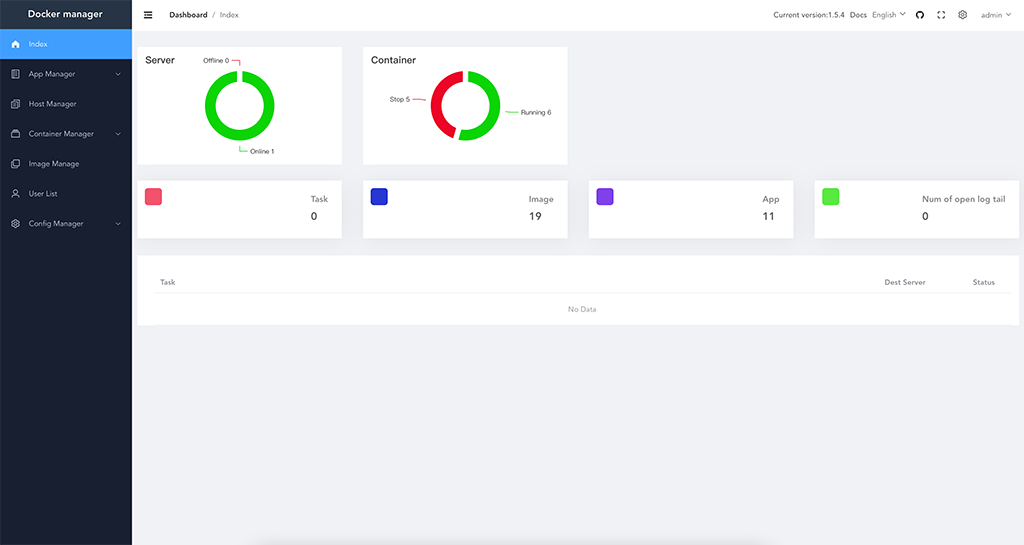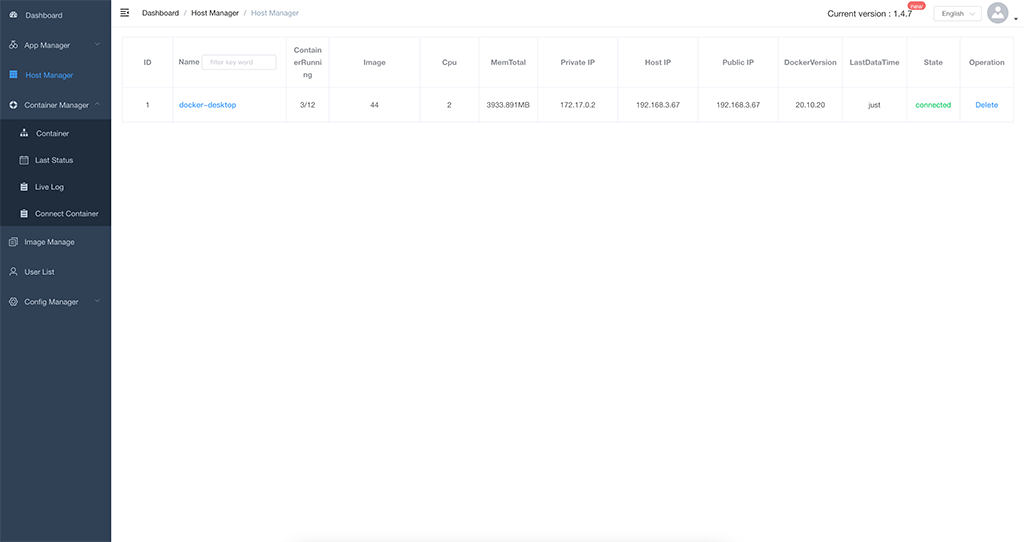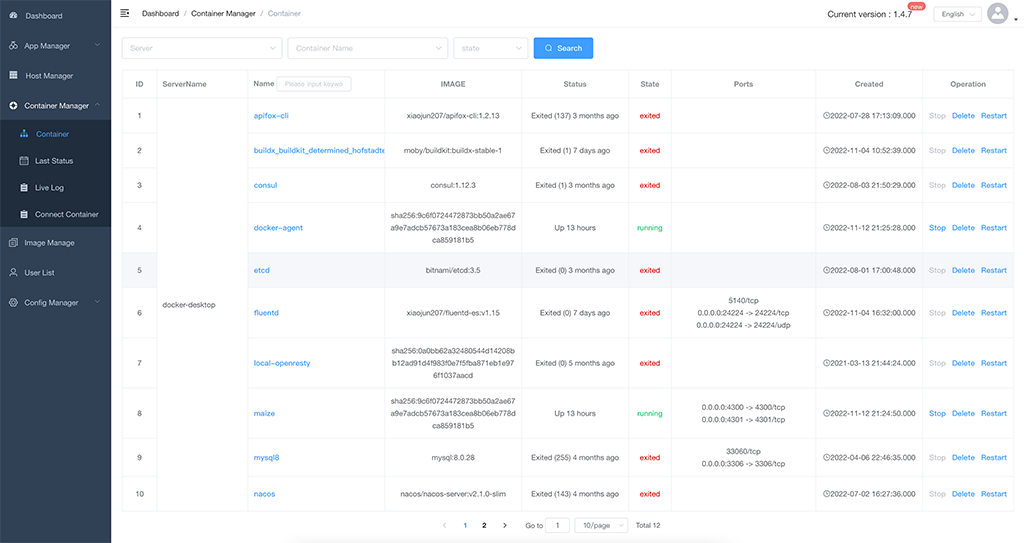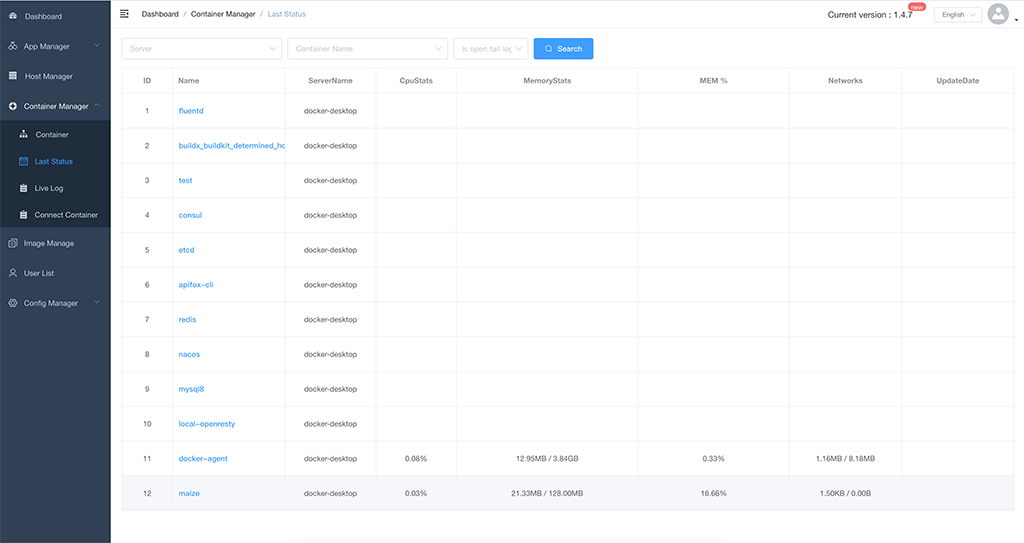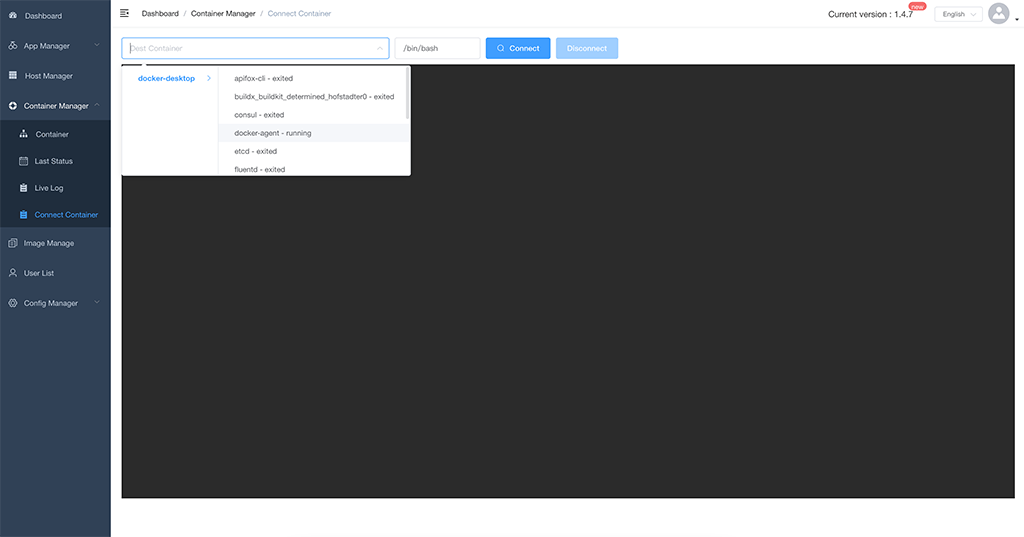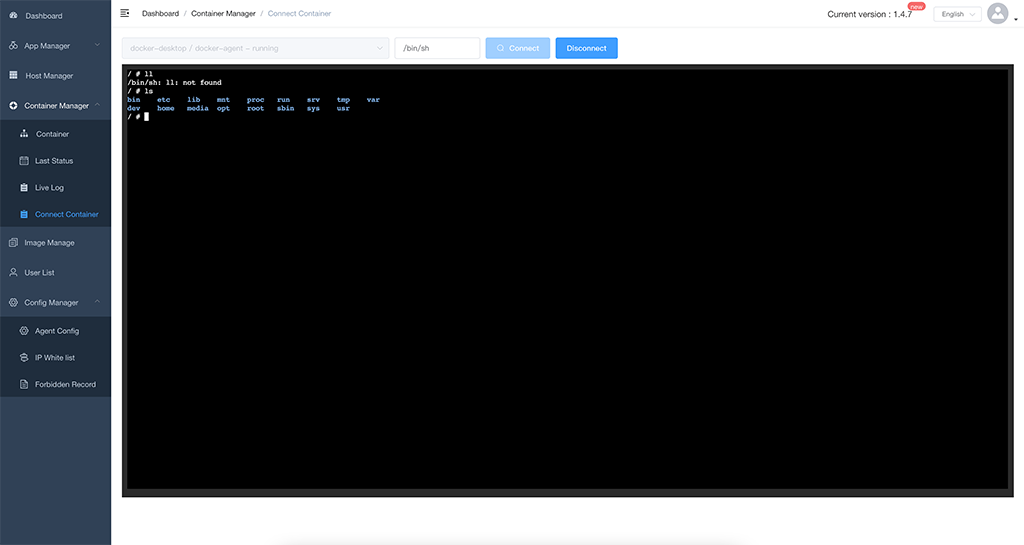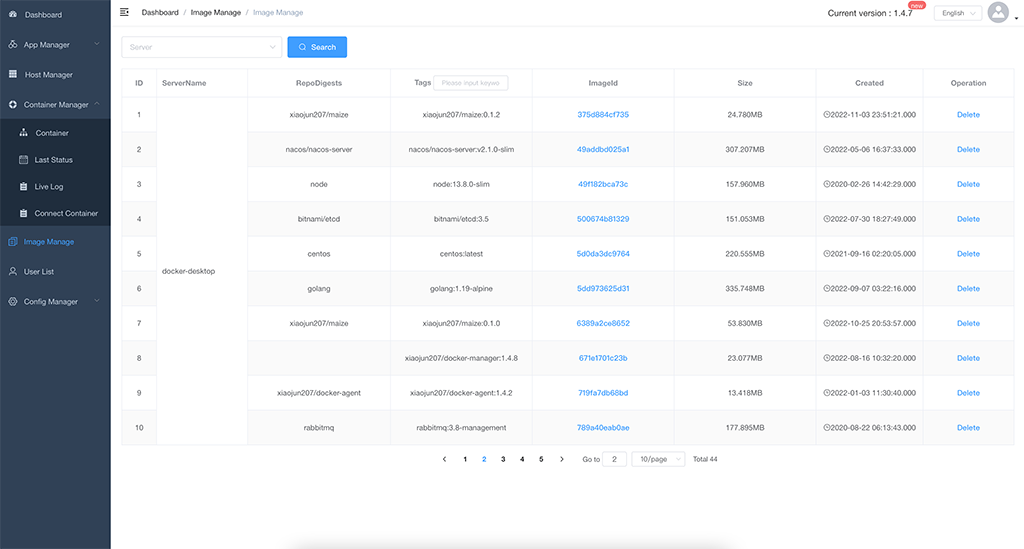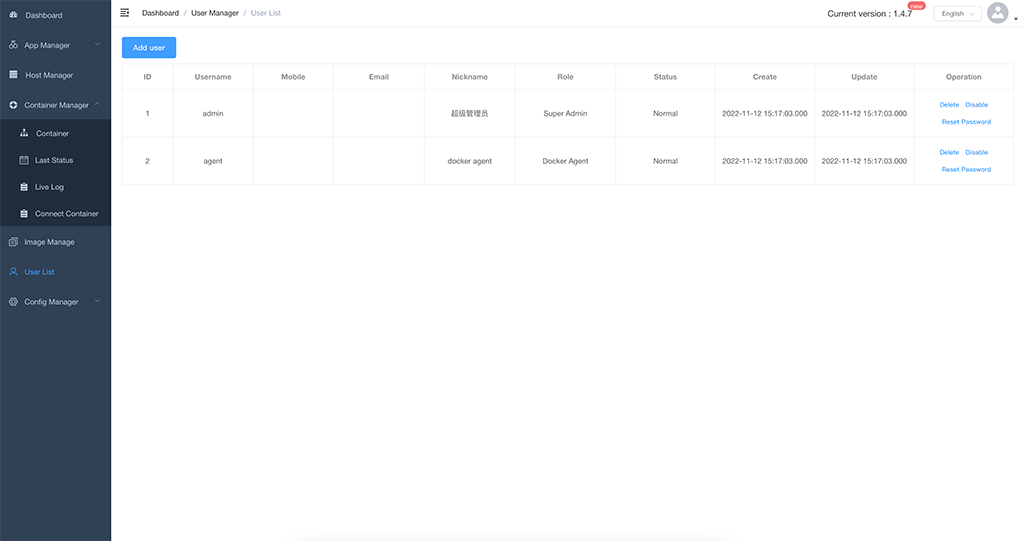Front end page: https://github.com/xiaojun207/docker-manager-page
Docker-agent: https://github.com/xiaojun207/docker-agent
Because some of our servers are distributed in different network environments. And, these server programs use docker for publishing, but do not use k8s such tools. In a discrete management state. I've also considered tools like rancher, but it's still too heavy for us. I need a lighter management tool. Therefore, docker manager and docker agent were born.
Docker based multi host container web management, data is stored as sqlit3 by default.
- Overview, including: number of servers, number of running containers, total number of containers, number of applications, number of distributed tasks, and number of real-time logs opened.
- Display of all containers, including container name, ID, server, image used, port and creation time.
- You can start container, delete container, restart container.
- Container status information, including CPU usage, memory usage, and network usage.
- Publish a new container to the target server.
- The container real-time log (if exists) is like to: docker logs - F -- tail 10 containername. It is more resource consuming. It is better to only view the log temporarily (this function does not support cluster deployment).
- Display of server assets, mainly including: total number of containers, number of running containers, CPU usage, memory usage, docker version, and whether docker agent is online (this function does not support cluster deployment).
- User management, administrator and docker agent account, password and status management.
- White space ip list.
docker pull xiaojun207/docker-manager:latest
docker ps -aq --filter "name=docker-manager" | grep -q . && docker stop docker-manager && docker rm -fv docker-manager
docker run -d --name docker-manager -p 8068:8068 -v /app/docker-manager/data:/app/data xiaojun207/docker-manager:latest
or
docker run -d --name docker-manager -p 8068:8068 -e driveName=mysql -e dataSourceUrl='root:password@(dbhost:3306)/dbname?charset=utf8' xiaojun207/docker-manager:latest
Parameter Description:
| Parameter | required | default value | description |
|---|---|---|---|
| driveName | no | sqlite3 | The default is "sqlite3", or "mysql". If MySQL is used, the "datasourceurl" must be configured. |
| dataSourceUrl | no | /app/data/database.db | Database connection URL, when driveName is "sqlite3","dataSourceUrl" default:data/database.db(/app/data/database.db), when driveName is "mysql",the "dataSourceUrl" is required,such as:-e dataSourceUrl='root:password@(dbhost:3306)/dbname?charset=utf8' |
| useCache | no | false | Whether to enable local cache. It can be enabled in stand-alone deployment, but not in cluster deployment |
| consoleCode | no | false | Whether to enable the console verification code. When the administrator retrieves the password, please set consolecode = true |
or use docker exec -it ... go into container,use config file(/app/config.yml).
Parameter priority:
[HardCode] < [ConfigFile(./config.yml)] < [Cmd parameters (or docker -e)]
Upon initial startup, the program will automatically create an administrator account (admin), a client account (agent, password), and a user name and password, which will be printed into the log output. (only displayed once, please make a backup)
- The data is stored as embedded sqlit3 by default, that is, docker-manager startup can be independent of other components, or mysql.
- After configuring the database connection parameters, the database tables will be automatically created and updated.
- Configuration parameters: driveName, dataSourceUrl
Configure mysql as follows
-e driveName=sqlit3 -e dataSourceUrl='/app/data/database.db' Configure mysql as follows
-e driveName=mysql -e dataSourceUrl='root:password@(dbhost:3306)/dbname? charset=utf8' Currently, both MySQL 5.6.44 and MySQL 8.0 are running normally
eg.:
real_ip_header X-Forwarded-For;
real_ip_recursive on;
map $http_upgrade $connection_upgrade {
default upgrade;
'' close;
}
map $http_x_forwarded_for $ClientRealIP {
"" $remote_addr;
~^(?P<firstAddr>[0-9\.]+),?.*$ $firstAddr;
}
server {
listen 80;
server_name dockermanager.com;
client_max_body_size 1000m;
location / {
proxy_set_header Host $host;
proxy_set_header X-Real-IP $ClientRealIP;
proxy_set_header X-Forwarded-For $http_x_forwarded_for;
proxy_http_version 1.1;
proxy_set_header Upgrade $http_upgrade; # websocket
proxy_set_header Connection $connection_upgrade; # websocket
proxy_pass http:https://dockermgr_api;
}
}docker pull xiaojun207/docker-agent:latest
docker run -d --name docker-agent -v /var/run/docker.sock:/var/run/docker.sock -e DockerServer="http:https://192.168.1.200:8068/dockerMgrApi/agent" -e Username="agent" -e Password="12345678" -e HostIp="192.168.1.6" xiaojun207/docker-agent:latest
It should be used in conjunction with "xiaojun207/docker-agent" image. Please refer to the description for the specific usage of docker agent
Special note: The hostname of each server (the host of docker agent) must be unique
If you have any ideas or suggestions, please send an email to the following email:
email: [email protected]

